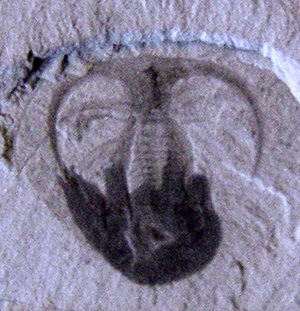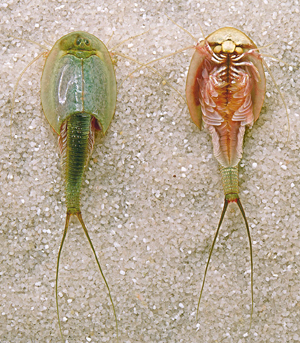After a trillion lonely sunsets, the slimy oceans of the paleozoic began to stir.
For the first time, sea sediments were agitated by the activity of wiggling, burrowing and swimming animals with wild new body plans -- including a few creatures which might one day become familiar to us.
The "Cambrian Explosion" was made possible by a new collection of genes called the Hox Cluster. These master instructions taught cells how to sniff hormones leaking from the front, top and sides of a developing embryo. This internal “GPS” system enabled cells to locate themselves inside a clump of growing tissue, and develop into complex body shapes that could rapidly evolve over generations.
Some of these early animals were bizarre and defy easy classification. Because they were soft and small, only a few formations such as the Chengjiang or Burgess shale have fossils fine enough to offer glimpses of our planet’s first citizens. One example is Marrella, the “lace crab” discovered by Thomas Walcott. The specimen above is on display at the Yoho museum in Canada. Triops, shown below. is a modern relative.
Tourists wanting to visit the Cambrian period can head for Sneedville, Tennessee, where Cambrian rocks are exposed and trilobites have been collected. |

Marrella splendens, from the Burgess Shale.

Triops longicaudatus, photo by David Bernvi |